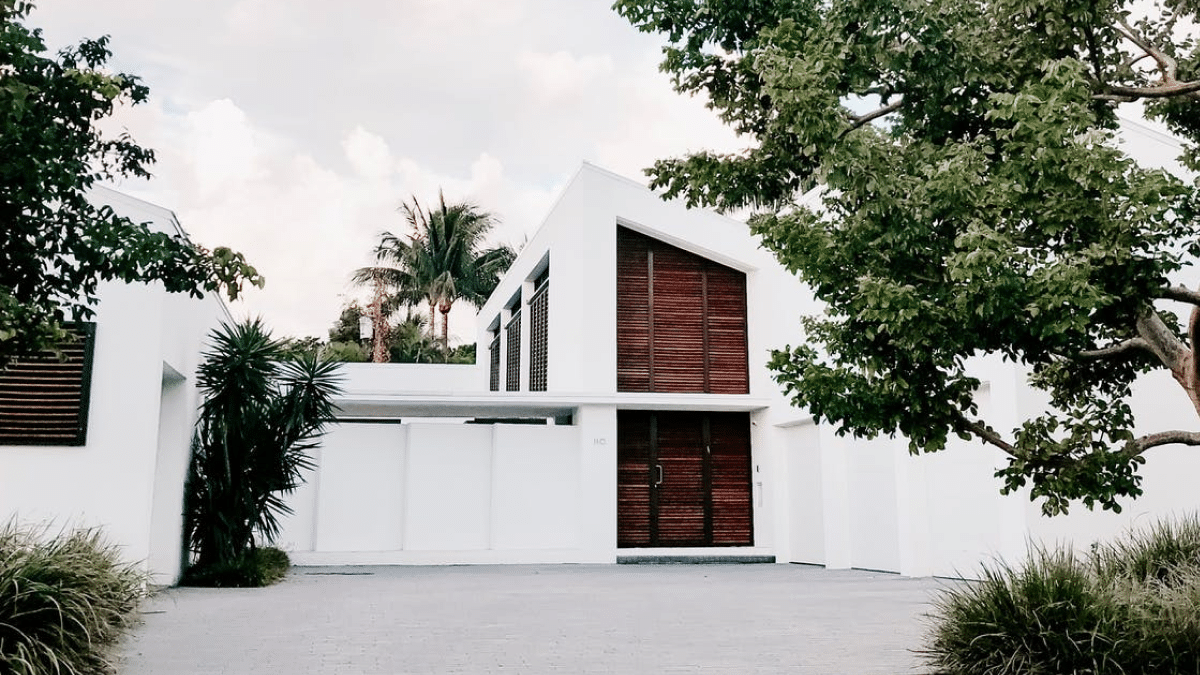When shopping for your mortgage, you may already know some of the one-time costs involved, such as down payment and closing costs. But there are also some recurring costs — like mortgage insurance — that you should get familiar with, too.
So, what is mortgage insurance — and how do you know if you must pay it?
In this article, we’ll look at the definition of mortgage insurance and discuss two types of mortgage insurance: private mortgage insurance (PMI) and the Federal Housing Administration (FHA) mortgage insurance premium (MIP). We’ll also explain how mortgage insurance works and even how to avoid it altogether.
What is Mortgage Insurance?
Put simply, mortgage insurance protects your lender if you default on your loan.
Here’s how mortgage insurance lowers the risk to a lender: Let’s say a borrower stops paying on a home loan. The lender must foreclose on the home. In the process, the lender loses out on all the time, effort, and money they put into lending money to the borrower.
A borrower’s mortgage insurance payments help guard against the costs and headaches of the lender foreclosing on a home.
We’ll go over two main types of mortgage insurance:
- Private mortgage insurance (PMI): You’ll pay PMI if you make a down payment of less than 20% for a conventional loan. A conventional loan is not insured or guaranteed by the federal government.
- Mortgage insurance premium (MIP): If you opt for an FHA loan, which is backed by the Federal Housing Administration, you’ll pay an MIP.
Types of Mortgage Insurance
Let’s go into further detail on the different types of mortgage insurance options, including borrower-paid mortgage insurance (BPMI), lender-paid mortgage insurance (LPMI) and FHA mortgage insurance.
Borrower-Paid Mortgage Insurance
Most borrowers pay BPMI, which rolls directly into your monthly mortgage payment. You’ll make the BPMI payment every month until your principal loan balance goes down to 80% (put another way: the point at which you reach 20% equity). We’ll go over how you can cancel PMI later in the article.
Lender-Paid Mortgage Insurance
Mortgage insurance works a bit differently through LPMI. Your lender pays your mortgage insurance. In return, you take on a slightly higher interest rate for your mortgage.
The downside is that you can’t cancel LPMI because you’ve traded monthly payments for a different interest rate, and it automatically becomes part of the loan.
FHA Mortgage Insurance Premium
An FHA loan allows you to get a loan with a low down payment (3.5%) and a credit score as low as 500. If you put down less than 10% for a down payment, you’ll pay MIP for the life of your loan. When you put 10% or more down on an FHA loan, you pay mortgage insurance premiums for 11 years rather than the life of the loan.
How Much is Mortgage Insurance?
The amount you pay for mortgage insurance depends on the type of mortgage you get.
The exact costs depend on your credit score, how much you borrow and how much you have for a down payment. PMI generally costs about 1% of the original loan amount per year, spread out over each of your monthly mortgage payments. You may pay slightly more or less, depending on a few factors:
- Loan size: Larger loan amounts mean you’ll pay more for PMI. The amount you put down has to do with your loan-to-value (LTV) ratio or the amount you borrow compared to the home value that secures the loan. Lenders use LTV to determine how much risk they take on when they loan to you. Conventional mortgages with an LTV ratio of larger than 80% require PMI.
- Down payment: Down payments of more than 20% allow you to forgo PMI altogether.
- Your credit score: Your credit score is a three-digit number that helps lenders estimate how well you pay back debt. Generally, the higher your credit score, the less you’ll pay for PMI.
- Mortgage type: An adjustable-rate mortgage (ARM), often called a variable-rate mortgage or a floating mortgage, refers to a type of mortgage in which the interest rate varies throughout the life of the loan. A fixed-rate mortgage keeps the same interest rate throughout the loan term. An ARM poses slightly more risk than a fixed-rate mortgage, so you may pay more for PMI with an ARM.
The FHA MIP requires a one-time upfront mortgage insurance premium (UFMIP) (1.75% of your base loan amount), which can also roll into your mortgage.
In addition to the one-time UFMIP, you’ll also pay an MIP between 0.45% to 1.05% annually, depending on the size of your down payment and loan term. You’ll usually pay these in equal monthly installments, which are rolled into your mortgage payments. You can choose from other payment options, which we’ll detail below.
How Does Mortgage Insurance Work?
Good news: Most mortgage insurance plans allow you to cancel PMI once you’ve paid off more than 20% of the full loan amount of your home. Your lender must cancel your PMI if you ask in writing. If you don’t write a letter to your lender asking to cancel PMI, the lender will automatically cancel PMI when the mortgage balance reaches 78%.
You may want to keep track of your principal balance relative to your current balance so you get out of PMI as soon as you can.
We’ve talked a lot about PMI vs. MIP — but what about other fees, like the USDA guarantee fee and the VA funding fee?
- USDA guarantee fee: You pay an upfront guarantee fee and annual fee when you get a USDA loan, a loan backed by the U.S. Department of Agriculture. You can get a USDA loan if you buy a home in a qualified rural or suburban area. The upfront guarantee fee equals 1% of the loan amount. You’ll pay a 0.35% annual fee as well. You must live in a rural or suburban area and meet income requirements to qualify.
- VA funding fee: The VA funding fee for loans is a one-time payment that a qualified veteran, service member, or survivor pays on a VA-backed or VA direct home loan. It costs between 1.4% to 2.3%, depending on your down payment amount and how many times you’ve gotten a loan backed by the Department of Veteran Affairs.
How is Mortgage Insurance Calculated?
Your lender will calculate your mortgage insurance rate. You can also use a mortgage calculator to get an estimate of how much you’ll pay for your monthly mortgage payment. Morty’s personalized Loan Options tool can provide you with an estimate as well!
Again, mortgage insurance amounts are based on several factors that determine risk, including your credit score, down payment amount relative to the purchase price and mortgage type.
Let’s take a look at an example of how PMI could work. Let’s say you get a home loan for $200,000. Assuming a 1% rate, you’d owe $2,000 per year in mortgage insurance or about $166 per month.
Using that same $200,000 loan example, let’s now look at how an MIP for an FHA loan could work. The upfront fee would cost 1.75% of your base loan amount, which would be $3,500. Let’s say that you will make 0.45% annual MIP payments as well. This means you’d owe $900 per year or $75 per month.
Ways to Pay
How can you pay for mortgage insurance? (Hint: You don’t necessarily have to pay monthly.)
Annual Payment
PMI payment options vary, but you may be able to make one annual payment as a lump sum at the beginning of each year instead of breaking the full amount into monthly payments.
Monthly Payment
The monthly payment represents the most common payment option. Your lender automatically adds PMI to your monthly mortgage payment. In this case, you don’t make a large upfront payment, but your monthly payments will be higher.
Single-Premium Mortgage Insurance
You can pay your premium as a single lump sum upfront payment. You can either pay this in full at closing or roll the amount into the loan, which means you’d end up with a higher balance.
You may not want to choose this option if you plan to eventually move or refinance because you may not get a refund on your payment.
Split-Premium Mortgage Insurance
A split-premium PMI arrangement is a hybrid approach of a single-premium mortgage insurance payment and a monthly payment. You pay a larger upfront fee that covers part of the costs, thus shrinking your monthly payments.
How to Avoid Mortgage Insurance
Many people wonder how to avoid mortgage insurance from a personal finance perspective.
The easiest way to avoid PMI on a conventional mortgage involves putting at least 20% down toward a home. You could also choose the lender-paid PMI option, but remember: that means you accept a higher interest rate in return for the lender paying PMI.
Some state housing agencies offer mortgage and down payment assistance programs. These can include low down payment mortgages, which eliminate the PMI requirement.
The easiest way to lower your MIP expenses with an FHA loan is to save more for a down payment. Taking at least 10% to the closing table means you’ll lower your upfront premium. You’ll also pay for MIP for fewer years with a larger down payment.
You can also get rid of MIP by refinancing your mortgage into a non-FHA loan, such as a conventional loan or USDA or VA loan. USDA and VA loans don’t require a down payment or mortgage insurance.
Frequently Asked Mortgage Insurance Questions
Do first-time home buyers have to pay mortgage insurance?
First-time real estate buyers do not necessarily have to pay mortgage insurance. Whether or not you have to pay mortgage insurance depends on the size of your down payment. Furthermore, the type of loan program you use has a bearing on whether you pay mortgage insurance or not.
How long do you need to have mortgage insurance?
You can cancel PMI once you’ve paid off more than 20% of the full loan amount of your home. If you don’t request to cancel at 80%, your lender must automatically cancel the PMI once the balance dips down to 78%.
Whether you’re looking for mortgage insurance dos and don’ts or tips on jumbo mortgages, Morty can help you get the jump on all things homeownership.







